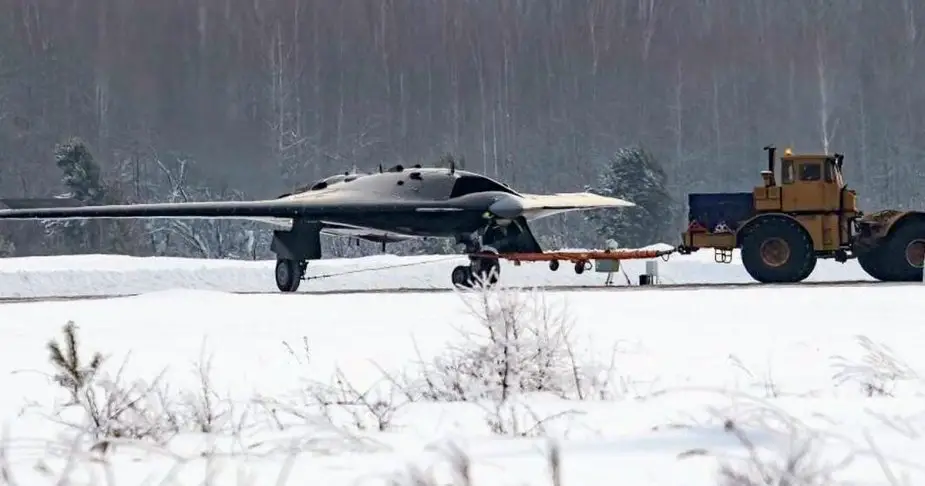Breaking news
Russian combat UAV Sukhoi S-70 Okhotnik made first flight.
Russian heavy strike unmanned aerial vehicle Okhotnik, developed by the KB Sukhoi Design Bureau, made its first flight, the Russian Defense Ministry reports. "The "Okhotnik" military long-endurance unmanned aerial vehicle has made its first flight. It lasted over 20 minutes. Controlled by the operator, the UAV made a few test flights over the airfield at an altitude of around 600 m and successfully landed," says the report distributed by the Ministry.

Sukhoi S-70 "Okhotnik", also referred to as Okhotnik-B, when spotted last winter on the ground (Picture source: Twitter)
According to the Defense Ministry, the drone undergoes trials at one of the Ministry’s test airfields. The "Okhotnik" features a flying wing design and is built using special materials and coatings that make it virtually unobservable by detection radars, the Ministry source adds. The drone is fitted with optronic, radio- and other types of reconnaissance systems.
The Sukhoi Okhotnik or Sukhoi S-70 "Okhotnik", also referred to as Okhotnik-B, is a Russian stealth heavy unmanned combat aerial vehicle (UCAV) being developed by Sukhoi as a sixth-generation aircraft project. The drone is based on the earlier Mikoyan Skat, designed by MiG, and encompassing some technologies of the fifth-generation Sukhoi Su-57 fighter jet.
The Okhotnik has been under development since at least 2011, when Sukhoi was selected by the Russian Defence Ministry to lead a programme for a new heavy unmanned reconnaissance and attack drone. The new UCAV is being jointly developed by MiG and Sukhoi, based on data of the earlier Mikoyan Skat UCAV programme. The work is carried out by the Novosibirsk Aircraft Production Association, part of the Sukhoi company. In the documents, the drone is characterised as a "sixth-generation unmanned aerial vehicle".
The first mock-up intended for ground tests was created in 2014. The prototype of the drone was first revealed in July 2017, showing the drone's flying wing configuration. In November 2018, the drone performed the first series of taxiing, speeding and stopping tests in fully autonomous mode at a runway of the Novosibirsk Aircraft Production Association plant. During the runs, it reached a maximum speed of 200 km/h.
On 18 January 2019, the third flyable Su-57 prototype (bort no. 053) was spotted wearing a new digital camouflage paint scheme, with a digital silhouette of the Okhotnik on its top and underside. On 24 January 2019, the first flyable prototype of the drone was seen towed at the Novosibirsk Aircraft Production Association plant. According to Russian officials, the Su-57 is being used as a flying laboratory for the testing of the Okhotnik's onboard radio-electronic systems, namely avionics.
In late May 2019, Okhotnik performed a series of flight tests during which the drone flew several meters above a runway of the Novosibirsk Aircraft Production Association plant.
The Okhotnik's design is based on the flying-wing scheme and incorporates the use of composite materials and stealth coatings, making the drone low-observable in flight. It has a mass of about 20 tons and wingspan around 65 feet (20 meters). The drone is powered either by a single AL-31F turbofan, as used on the Sukhoi Su-27 fighter aircraft, or by the improved AL-41F derivative installed on Su-35S fighters and Su-57 prototypes (1 × Saturn AL-31F or AL-41F, 123–147 kN with afterburner). The maximum speed of the drone is reportedly 1,000 km/h. It is likely the Okhotnik was designed to act as a 'loyal wingman' controlled by a parent aircraft, namely the Su-57.
It has 2 internal weapons bays for up to 2,000 kg of guided and unguided ammunition.


























